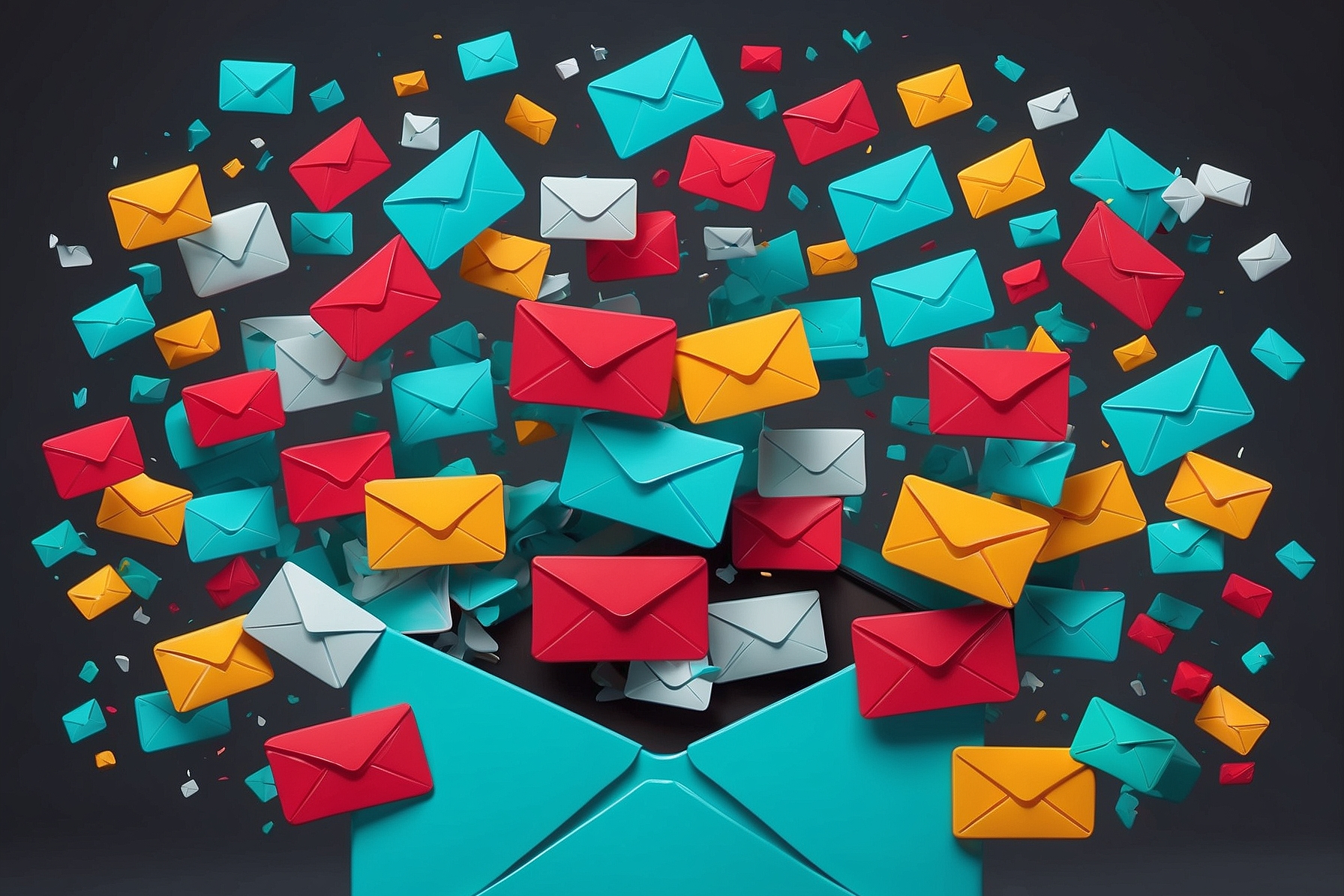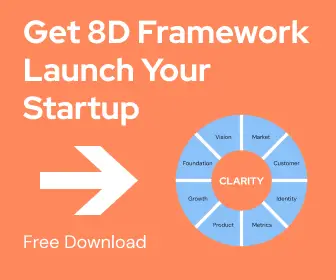Welcome to the first article of the email marketing series! If you despise the salesy shoving-promos-down-your-throat marketing style, I strongly recommend reading through these.
While “email marketing” might sound as exciting as watching paint dry – this series could truly change the way you think about your advertising.
If you have time to read a couple of articles, you’ll learn how to get the most amount of sales by actually selling less and having more fun.
For this article, I just want you to shake hands with email marketing and discover how powerful it can be.
Throughout this read, notice the common theme: relationships (not the dating type though)
What is Email Marketing and Why am I Hyping it Up So Much?
Simply put: emails a business sends to its readers to get them to buy a product. Pretty basic stuff. Moving on…

Studies show email marketing drives more conversions than any other marketing channel. For every dollar spent on email marketing, the average ROI (return on investment) is $36. This is just the average, and trust me when I say this, average email marketing is NOT nearly as good as it could be.
For all the “where’s the source nerds”, here you go: https://www.campaignmonitor.com/blog/email-marketing/70-email-marketing-stats-you-need-to-know/
When I tell these statistics or how much people make from email, I often get the same reaction:
*Eyes wide open with shock* – What??? I never open marketing emails hahaha, there’s no way it works so well!”
I don’t see this question as an obstacle. I see it as proof of how powerful email marketing can be. Most people just get boring ads in their inboxes, that’s why they never open them…
If you write them in the right way (which I talk about IN-DEPTH in the next article), your emails receive amazing open and conversion rates.
In case you don’t know, open rates refer to the percentage of people who open your emails, while conversion rates are the percentage of those who actually go on to buy your product after receiving the email.
Why It Works So Well, In a Nutshell
First, let me explain why boring emails don’t work that well. Ads (like boring emails) don’t build RELATIONSHIPS with you. When you see a TV or Google Ad, you don’t connect with the brand. You don’t find out about the person showing you the ads. And you definitely don’t get excited to get their ads again.
With good email marketing, you talk one-on-one with the reader, you entertain them, and you help them improve by sharing your expertise and products. That’s how relationships are built and how fans are made.
Admittedly, it sounds a bit weird – but when you have email relationships with your readers, your open rates and conversions skyrocket.
If you go to ChatGPT and ask for the average open rates, it will tell you it’s about 20%. To put it another way, that’s just 2 out of 10 people who open your email…
I can tell you first-hand that it can get much, MUCH higher. Good marketers consistently achieve even 75% open rates. That’s 7 (and a half) people out of 10 that read about your product, multiple times a week. How many sales do you think that could bring you?
Basics of Email Marketing:
What to Do, and Definitely What NOT to Do

One of the secrets to being a must-read for your customers is… talking ABOUT the customer. Sounds logical, but you’d be surprised to see just how many businesses get this wrong.
So many people write about themselves in their emails, instead of talking about the customers’ pains, frustrations, and dreams.
Let me give you an example. Here’s a (rather uninteresting) email I received from the design brand Figma:
*Important note: the following roasts are only for educational purposes…*
I don’t know about you, but this email doesn’t spike any curiosity in me.
Okay, I know you’ll be talking about design and development – but what does this mean for me? How will that benefit me?
Mmm, I see, I’ll know about the Figma product keynote and I’ll find out about AI.. so what? How does this improve MY life? What will I be able to achieve with this extra knowledge?
When you get an email like this, you probably won’t click the button. You’ll likely just yawn as you search for the “Trash” button…
When writing emails to your customers, talk about THEIR issues, dreams, problems, frustrations… and help them by offering your product.
The only exception to the “talk about them and not about yourself” rule is if you’re being entertaining while doing so. I’ll show you how to make emails “entertaining” in the next email marketing article.
The Three MAIN Types Of Emails to Differentiate: Don’t Get These Twisted…
You can send a variety of emails to your list, each with its own purpose. But, they all generally fall into three main categories:
- Autoresponder emails: The bread and butter of email marketing. Each time someone performs an action, these emails are automatically sent. For example, a welcome sequence is triggered every time someone signs up for your newsletter. A cart abandonment sequence is triggered every time someone leaves their products in the online shopping cart all alone🙁, etc. They’re very efficient because you write them once and they work forever. Many ecommerce brands only have these set up and it works great for them. But for many other brands, autoresponders are not enough, so they use…
- Broadcast emails: Emails you write and send to your email list immediately (or you schedule them). The point is that they only send out once and you have to keep writing them. These are the emails you send regularly to nurture your list. For example, you send out lessons, stories, news about your industry… and link your products. This is how you connect with your audience most – by entertaining them and giving them value, multiple times a week. A lot of people are worried about emailing too much, but when you do this right, people will literally ask you to email them MORE.
- Launch emails: Emails you send out to launch a product, duh. You hype your product up a lot, create massive curiosity around it, and put urgency around your offer. When you launch a product, you can count on having a high amount of sales in a short period. For launches to work well, you need to establish a relationship with your readers first. People probably won’t be excited about your new offers unless they already know and like you.
Do you see how these all come into play? You’re always getting some emails – either because you performed an action, or the brand is directly sending you something interesting, or a new exciting offer is being launched. If the brand is valuable and entertaining, you might find it hard not to buy something…
Potential risks of email marketing: What You Need to (Must?) Watch Out For
There aren’t really many risks, as long as you follow some rules. Let me just lay them out for you, so you can come back to this guide whenever you need.
- Opt-Out Mechanism: At the end of every email you send, you must provide a clear way to opt out of receiving future emails. Also, each time someone unsubscribes, you have 10 business days to remove them from the list. A lot of people are afraid of getting unsubscribers, but I don’t think you should worry about it. If someone unsubscribes, it just means they’re not your target audience.
- Accurate Header Information: Basically, this means that your “From”, and “To” information has to be accurate. If you thought you were going to get a 1000% open rate by calling yourself Donald Trump, too bad…
- Subject Line Requirements: The subject line of the email must not be misleading and should accurately represent the content of the message. Just focus on the subject line making sense after reading the email. You can’t say “A business invite from Elon Musk” and then talk about hand sanitizers without even mentioning Elon.
- Physical Address Requirement: If you open any (legal) marketing email in your inbox, you’ll find their business’s physical address in the footer. This allows you to identify the sender, so you can contact the business if necessary.
- Penalties for Non-Compliance: In the USA, violating the CAN-SPAM Act can result in significant penalties, with fines reaching up to $51,744 per violation. Both the sender and any third-party companies involved in the email marketing can be held liable. It’s a scary number, yes, but it’s not hard to comply with these rules. If you want to find out more, here is the official US government website: https://www.ftc.gov/business-guidance/resources/can-spam-act-compliance-guide-business
Takeaways
At the beginning of the article, I asked you to notice the common theme about relationships in emails. If you get that forming relationships = $$$, you’re already on a good path. Other than that, here’s a summary of what you learned in this article:
- For every dollar spent on email marketing, the average ROI (return on investment) is $36… And that’s for AVERAGE email marketing.
- People DO open emails when they receive really good ones – but most of them don’t.
- You only form relationships by entertaining and helping your readers.
- Again, to make a lot of sales, focus on being someone your audience WANTS to hear from.
- Talk about your customer’s pains, frustrations, hopes, and dreams. Not just about yourself.
- If you do talk about yourself… Do it in a way that’s valuable and entertaining.
- The three main email types are: autoresponders, broadcast emails, and launches.
- To avoid fines and angry readers, take into consideration: opt-out mechanisms, accurate header info, accurate subject lines, and physical addresses.
So there you have it – the blueprint for an email marketing strategy that doesn’t suck. Now all that’s left to do is to read our next article to find out how you can begin writing these emails.








